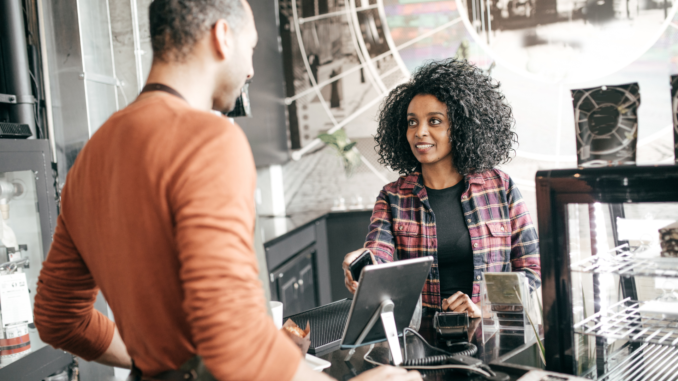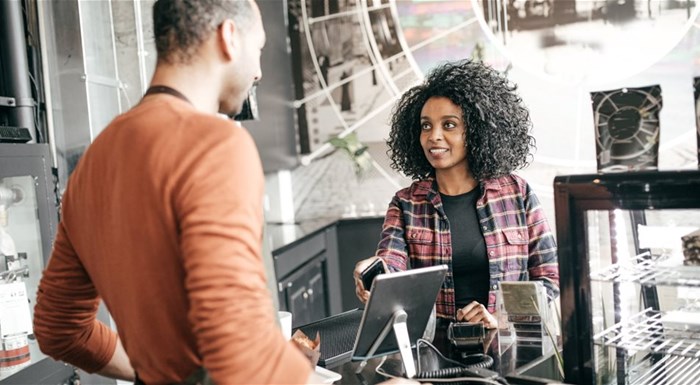
Ask any South African retailer what’s keeping them awake at night, and they’ll give you a shopping list. Consumers are spending less, but demanding more. They’re being asked to deliver better customer experiences in an omnichannel environment. Online shopping has become a way of life, which is having a major impact on stock availability and delivery options.

Image supplied
For many retailers, the solutions to these challenges doesn’t lie in artificial intelligence (AI), virtual reality or the metaverse. Instead, they’re turning to tried and tested technologies like document management, security and communications to cut costs, glean important insights into their customers and operations, and reach new and existing audiences.
“The retail space has become far more virtual since the pandemic. Customers want to know when they’re going to get their goods. But as retailers work to give their customers the so-called ‘seamless experience’, they’re being challenged to manage sensitive information better than ever, comply with regulations and get the most out of their legacy technology,” said Esti Kilian, head of product at managed business services provider Itec SA.
It’s print, but not as you know it
Until a few years ago, retailers were using printers to physically print out daily stock reports and manage the day-to-day running of their stores and operations. And many retailers would struggle to do business without one.
Today’s generation of multi-function printers (MFPs) can still do paper prints, if you like. But their real power lies in integrating directly into the business’ software systems, so that critical information – like processing of FICA documents, for example – is captured digitally.
“In an environment where big retailers are generating millions of printouts a month, any reduction in paper and ink usage will drive down costs. But where retailers are seeing massive value from their MFPs is by digitising their operations and providing real-time information that they can use to save money and provide a better customer experience,” said Kevin Johnstone, consulting executive at Itec SA.
“Print is the least sexy part of IT, but if stores can’t print and scan, they don’t operate. By gathering the data that comes from these machines, we can help drive new behaviours and standardisation of processes.”
Security: not big brother, but business support
Many retailers put in CCTV cameras, and only look at them when they need to find footage of an incident. That’s a huge waste of technology that could also be used to dramatically improve your retail operations, says Itec SA’s Ashley van Breda, security product manager.
“We want to change our clients’ view of what security can do for them. It’s not about being Big Brother. It’s about using the technology for more than it was originally intended, by managing and improving their business operations. With the help, of smart analytics, your security systems can provide a treasure trove of data and insights,” says Van Breda.
For example, your security system can tell you your busiest times and areas of the store, when and where you need extra staff, heatmapping where customers spend the most and least time, and where there’s a problem with flow.
There are also numerous warnings you can set: if there’s no teller at a till point, if a till is left open, or even if a known shoplifter has entered the store, using facial recognition.
While smaller retailers can get all this information directly to an app, bigger retailers are setting up central control rooms, with AI-driven systems that flag anomalies and gather usable information.
Digital communications, and the omnichannel
Creating an omnichannel environment is a competitive advantage for any retailer. It starts with modernising their communications systems to integrate voice and data. This allows them to offer the customer the same experience, whether via voice call, text, WhatsApp, email or social media.
The beauty of modern communications systems is that even a small retailer can afford them, says Itec’s Mitel product and pre-sales manager, Hannes van der Merwe. Through communication as a service, you don’t have to own the equipment and platform anymore. And all customer data, voice recordings and operational information can be integrated directly into a CRM or ERP system.
“Modern communications systems offer a range of benefits, including the ability to gather customer data and to collaborate easily with partners, suppliers and other stores. Telephony platform systems also allow for far more direct control of costs and budgets, and the ability to adjust according to business needs,” said Van der Merwe.
The bottom line
Retailers are already struggling to deal with a tough economic environment and changing consumer behaviours. They shouldn’t have to worry about their technology backend as well.
“Look for a technology partner that builds custom solutions for your environment, can offer you a range of procurement options, consolidates all your systems in one place and is prepared to walk a journey with you. Then you are free to focus on delivering the best customer experiences,” says Kilian.
